After 40 years: The Caveman Moves From Timex to Wahoo Rival
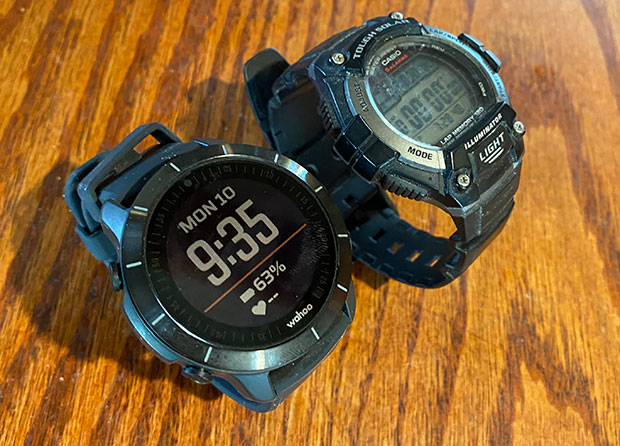
When I started running a signature purchase for this 13-year-old was a new stopwatch. I had already been a competitive runner for 2 years when the first digital watch came onto the market, and I graduated high school the year Casio made its first digital watch. The Timex IRONMAN® was intro’d the same year as my 10th high school reunion and had been my run timing device for 38 years. A button push starts the clock on that Timex; another button press stops the clock; and a third press resets to zero. Nothing more. I just wanted to run and to know how long it took me.
That has been the extent of my running tech until embarrassingly recently. My earliest attempts to get a GPS watch to do that for me – a Garmin Forerunner 205 – were not met with success, and part of that was Garmin’s fault and part was mine. Neither of us tried hard enough to make the marriage work.
My wife’s Garmin 945 is her treasured tool and she knows it inside and out. STRAVA is her social media; her connection with friends; more so than IG or FB or any other platform; and her 945 along with her Wahoo ELEMNT ROAM serve the same social media function than an iPhone serves for an Instagram junkie.
I didn’t walk through the front door to the Wahoo Rival. The use of that watch as a tool for running – replacing my Timex – happened because I crawled through the window of the Wahoo ELEMNT GPS head unit I use for cycling. The ELEMNT was my starter drug. Wahoo’s ELEMNT app was the first ecosystem app that I could well understand. Everything that followed – the apps from Stages, Tacx, SRAM’s AXS app, Shimano’s eTube app – all these apps that let me manage my connected hardware fell within my limited mental grasp because the Wahoo ELEMNT app was comprehensible.
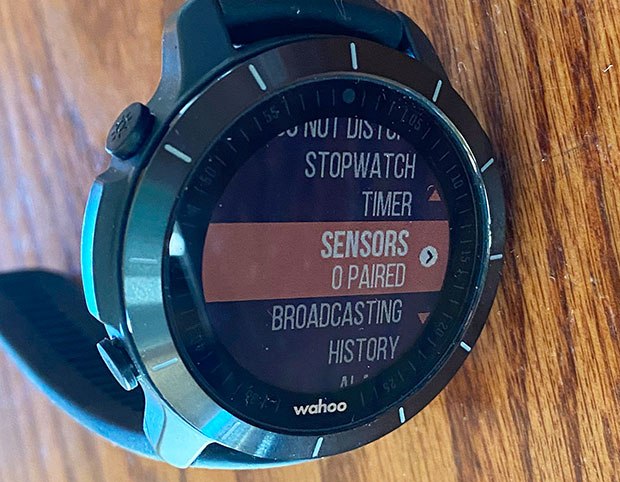
I’m not going to go into all the features of this GPS watch. Note that our Brian Gray covered our intro to the Rival, firmware upgrades, and Stryd support. I’m just going to walk you through my own process and I’m going to start with one function today which is important to me, and it has to do with another platform important to me: Zwift, both for ride and run. I’m going to talk about the use of this device performing a minor task: data broadcasting.
In the case of Zwift ride and run there are cases where I want heart rate recorded: I want to know how my bike power is affected by temperature, and heart rate is my normalizing metric; heart rate is still my governing metric in running; and heart rate is a requirement to participate in Zwift Duathlons, which I found to be great fun(!) last year. Here is how you do this with the Wahoo Rival.
There are 5 buttons on this watch. As is the case with every useful GPS sports device it both receives and transmits. What I was looking for here is data transmission (Broadcasting). I didn’t want to create a workout file, because for use in stationary training it’s not very helpful to have a GPS device mapping your run from Point-A to Point-A, never leaving Point-A. Also, like my Wahoo ELEMNT ROAM, the Rival is set up to automatically upload to STRAVA and when I go outside for a run this works perfectly. But for an indoor run, if Zwift sends a workout file to STRAVA, and the Rival does as well, I have to go in and manually delete one (or let everything believe I’m doing 2-a-day workouts).
If you press the left-side, lower button, on the Rival and hold it down, you go to the Menu screen with all your necessary tasks. Sensor's Paired is the default option, sitting in the batter's box.
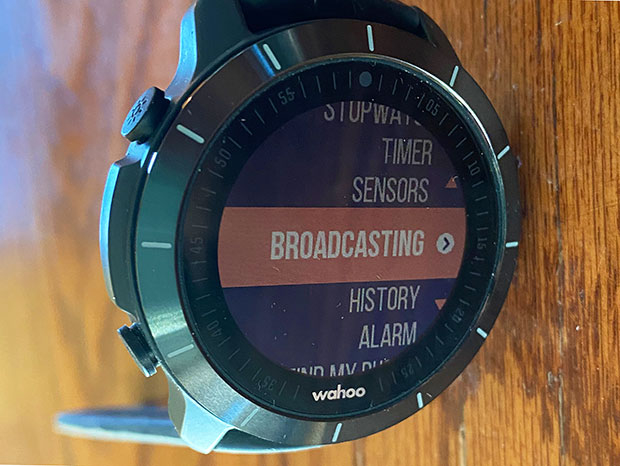
Broadcasting is the option just below that, with arrows pointing up and down. There are 3 buttons on the right side of that watch, and your instincts will serve you here. Pressing the lower button will cycle up the Broadcasting option; press the upper button and Timer cycles down.
Once I cycled Broadcast to the center position I clicked the center-right button, looking for the big reveal. Below are your Broadcasting options. Heart Rate is the default choice as a Broadcasted metric, and by default the Rival does not broadcast this signal. Accordingly, in the image below what you see is that the Heart Rate is not broadcasting.
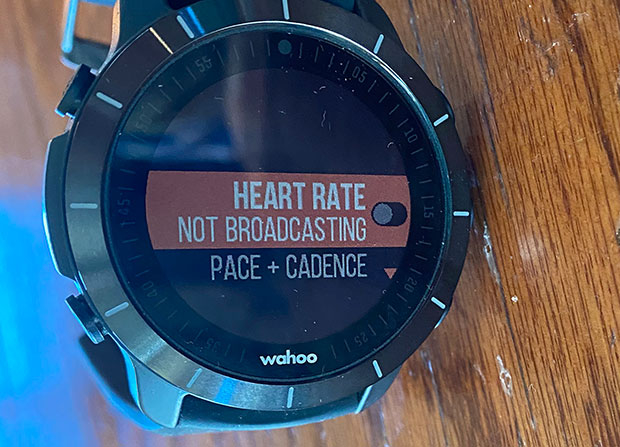
If you click the center button, you’ve now enabled Broadcasting. The Broadcast protocol I care about is BLE signal (Bluetooth), because the devices I’m broadcasting to seem these days more inclined to look for a BLE signal (computers that have Zwift loaded on them, AppleTV 4k, my iPhone, my treadmills). But once you tell the Rival to Broadcast it transmits both an ANT+ and a BLE signal.
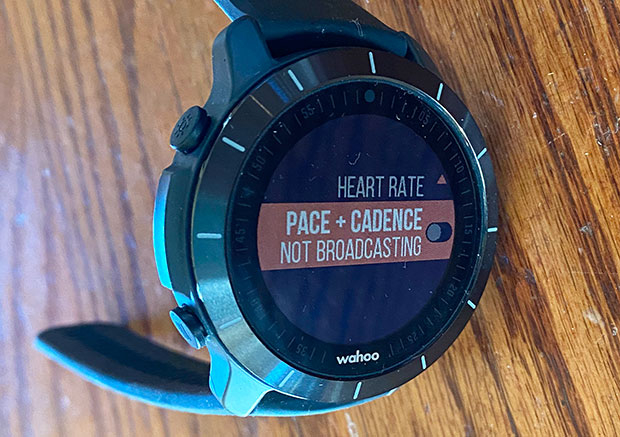
You’ll note in the Broadcasting menu two options: Heart Rate as we see; and just below that Pace+ Cadence. I wondered about this, because this is a run watch primarily (I use Wahoo’s head units for cycling). When I think of Cadence I think of cycling. In running I would call this Stride Rate. Nevertheless, I cycled Cadence up to the center position, as you see above. I clicked the center-right button so that Cadence showed Broadcasting as you see below.
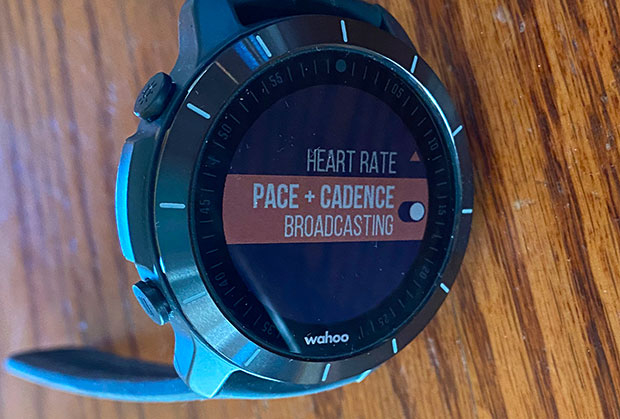
The HR signal worked almost perfectly, better in my experience than Wahoo’s dedicated HR monitor, the TICKER, which is Wahoo’s HR chest strap monitor. I’ve got to moisten the back of the TICKR, and it just doesn’t “kick in” as easily as the optical sensor on the Wahoo Rival. Having my HR discoverable by a watch on my wrist is so much more convenient!
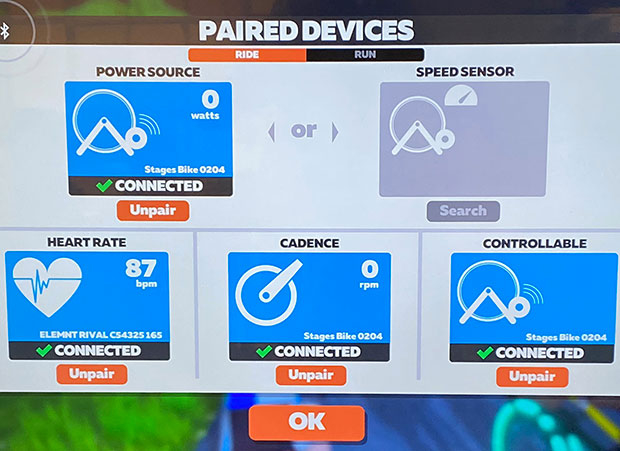
Above you see the pairing screen, which occurs in Zwift as you prepare to commence a Zwift ride. No drama pairing with the Rival.
Once I completed my Zwift ride I logged out of my Zwift account, and in the case of Zwift cycling I use a Windows tower computer (there are 60 posts on a Reader Forum thread on choosing my gaming rig); and I logged back into my Zwift account on an AppleTV 4k that is dedicated to a treadmill I use for Zwift running. I went through the same pairing process, as you see below, but specific to Zwift Running.
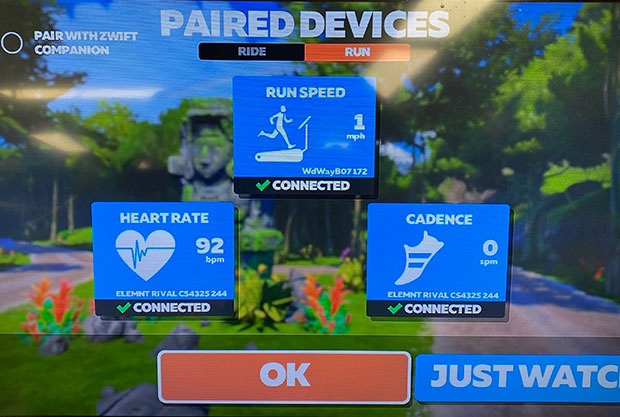
But there you see it, Cadence, and I thought, hmm, is this watch really prepared to track and transmit my running Stride Rate? So I clicked the Cadence option on the Zwift pairing screen (that blue rectangle at right in the image above), and danged if the Wahoo Rival didn’t show as an option. I chose it and the screen above is the result. But that didn’t mean that the Stride Rate would display (okay, I’m a caveman and a skeptic). So I commenced a run and what you see below is what we all see in Zwift Run, in the upper left of the monitor in-game.
As with cycling, the HR signal from the Rival was easier, quicker, more reliable than with the TICKR and the other chest-strap HR monitors I own. I’m pretty well done with chest straps, except in emergencies. The Cadence broadcast was, indeed, Stride Rate, and the Rival is perfect at picking that up.
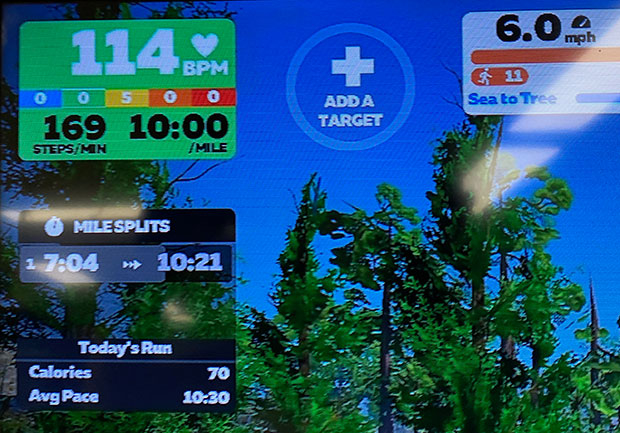
Below are a couple of graphs, from an hour-and-a-half Zwift ride followed by a 1-mile Zwift run. As you see (HR is the red line), during the ride there was a HR dropout (4 seconds). I had a few drops in prior rides and runs. This time, after my ride and before the run, I tightened the watch one buckle slot, still not tight, just not loose. No dropouts. How you wear the watch appears makes no difference in the Stride Rate performance, but may make a little bit of difference HR dropouts.
I would probably recommend turning off the Broadcast signals after your workouts, though I note that when I don’t turn them off at some point they appear to turn themselves off. But as with any BLE signal Broadcasting takes power. You must recharge this watch, and if I don’t ask it to spend energy on unnecessary things (Broadcasting when I’m not engaged in a workout) it can go upwards of a week between charges, and that’s while powered-up 24/7 and being used as my everyday watch.
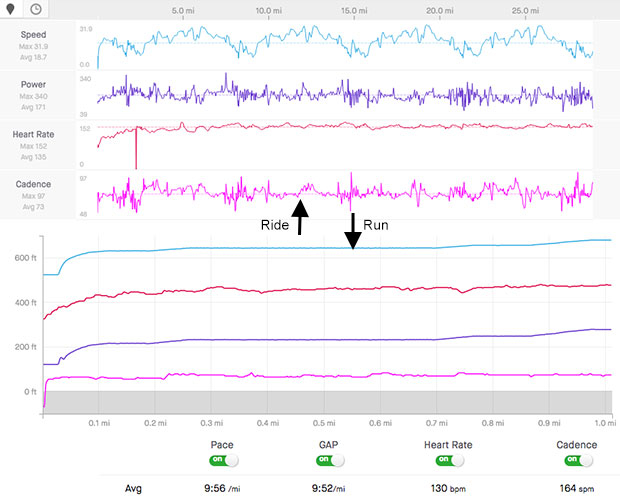
I’ll write more about my migration from stopwatch => Timex => Wahoo Rival from time to time but thing I would note: I would like Sleep Tracking from my Rival, because I have paroxysmal atrial fibrillation (my atria decide to go whacky but only now and then). Sleep Tracking could give my heart doctors some useful data. I rely on a $89 KardiaMobile for an at-home EKG trace, which tells me when I’m in our out of A-Fib, but Sleep Tracking would be a nice feature for the Rival.
Bear in mind that this is a $330 or do device (street price); it is not a $650 Garmin 945. But then, there are only so many features I can handle right now. Remember, I’m used to the complexity of a sports watch. I saw an article mid-December in the New York Times on The Best GPS Running Watches which featured Garmin and Coros, and which noted in passing Polar and Suunto. I was a disappointed Wahoo didn’t rate a mention. I just polled our readers and only 20 percent of you said, “Not in GPS Watch Buying Mode,” which means 80 percent of those responding are in GPS Watch Buying Mode. Of these, predictably, 72 percent are inclined toward Garmin, and then it’s 9 percent for Coros, 8 percent for Wahoo, 5 percent for Polar and 3 percent Suunto. Slowtwitch is Garmin and Wahoo country. With respect to the New York Times, you missed one.
As noted, ours is a mixed marriage. My wife is Garmin, I'm Wahoo. More from us later.


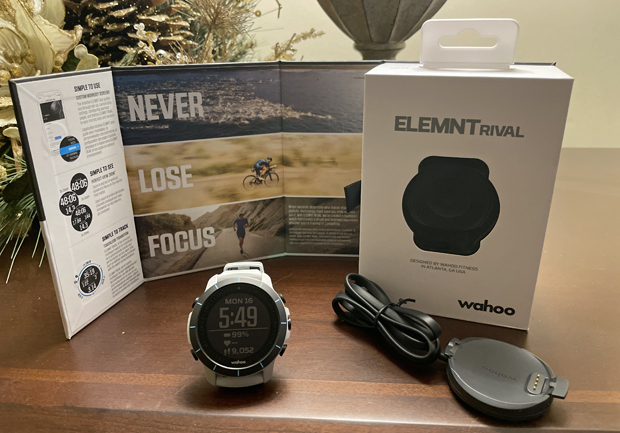
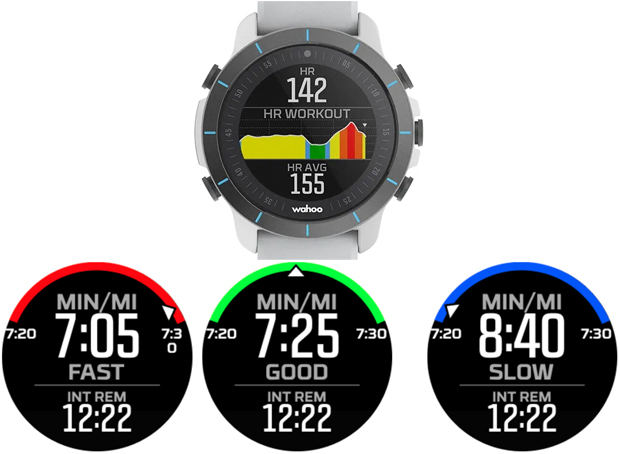
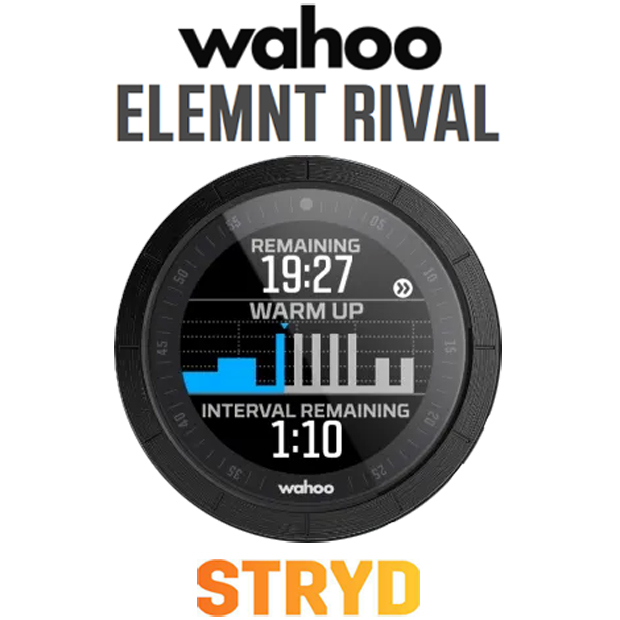
Start the discussion at slowtwitch.northend.network